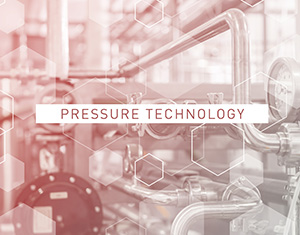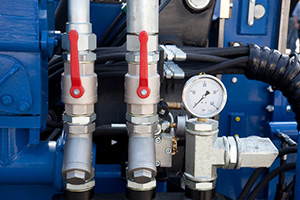ASME’s Five Strategic Technologies: Pressure Technology
ASME’s Five Strategic Technologies: Pressure Technology
This is the fifth in a series of ASME News articles on the Society’s five strategic technology focus areas: robotics, bioengineering, clean energy, manufacturing and pressure technology. This article will focus on ASME’s activities related to the topic of pressure technology.
When ASME volunteers and staff were going through the process of identifying and selecting the technology areas that would serve as the basis of the Society’s strategic emphasis, the choice of pressure technology was natural, given the Society’s long-standing connection to the sector through its Boiler and Pressure Vessel Code (BPVC) and related standards, conformity assessment programs, training and certification courses, and events that ASME has developed.
“It’s our strength, our brand,” said Paul Cleri, ASME’s business development director for Power and Energy. “We have a large number of subject matter experts and strong ties to industries in the pressure technology space,” Cleri continued, adding that those factors weighed heavily in favor of pressure technology being chosen as one of the five strategic technologies that were eventually approved by the Board of Governors.
Since then, the Society has been hard at work developing new activities and products related to pressure technology, including two new industry-focused events that were presented during the past year.
Last June, ASME held its first Pressure Technology Industry Forum, “Resolving the Challenges of Power Plant Cycling,” in Orlando, Fla. The conference brought together representatives from nearly 25 companies, government agencies, utilities and universities to discuss the logistics and economic issues facing owners and operators of base load power plants — facilities that were designed to consistently operate at full or near full capacity — due to the growing role fluctuating energy sources such as solar and wind are playing in electricity generation. The program, which incorporated panel sessions addressing the operations, maintenance and financial challenges of plant cycling, featured speakers from American Electric Power, Copperleaf Technologies, EPRI, Intertek, Modelon, Riley Power Inc., Sargent and Lundy, Siemens Energy Inc., Thielsch Engineering, and Vogt.
ASME presented a second industry forum related to pressure technology, Asset Integrity Management — Pipeline Integrity Management Under Geohazard Conditions (AIM-PIMG), from March 25-28 in Houston. The successful event, which drew approximately 110 attendees, featured several keynotes and panel discussions as well as approximately 90 technical presentations addressing the recent advances in managing landslides and other ground movement hazards, which can pose a serious threat to pipeline integrity.
ASME Standards & Certification has also been active in the pressure technology arena in recent months, having published several pressure technology standards: ASME NM.1-2018, Thermoplastic Piping Systems; ASME NM.2-2018, Glass Fiber-Reinforced Thermosetting Resin Piping Systems; ASME NM.3.1-2018, Nonmetallic Materials, Part 1—Thermoplastic Material Specifications; ASME NM.3.2-2018, Nonmetallic Materials, Part 2—Reinforced Thermoset Plastic Material Specifications; ASME NM.3.3-2018, Nonmetallic Materials, Part 3—Properties; B31.8, Gas Transmission and Distribution Piping Systems; and B31.8S, Managing System Integrity of Gas Pipelines.
Examples of other endeavors related to pressure technology at ASME include:
- The recent publication of the ASME Press books Pipeline Pumping and Compression Systems: A Practical Approach, Third Edition, API 1169 Pipeline Construction Inspector Examination Guidebook; Pipeline Geohazards: Planning, Design, Construction and Operations, and the forthcoming online publication of Companion Guide to the ASME Boiler & Pressure Vessel Code, which will be continually updated;
- The recent presentation of the three-part webinar series, Resolving the Challenges of Power Plant Cycling; and
- The 2018 launch of the ASME Journal of Nondestructive Evaluation, Diagnostics and Prognostics of Engineering Systems, which provides a venue for communication, discussion and dissemination of advanced research related to nondestructive evaluation (NDE), structural health monitoring (SHM) and prognosis, along with the existing ASME Journal of Pressure Vessel Technology, which serves as the flagship archival publication for research in the area of Pressure Technology; and
- Several recently introduced Learning & Development courses, including Boiler Operation and Maintenance (PD769); Inspection, Repairs and Alterations of Boilers (PD770); Design by Analysis Requirements in ASME Boiler and Pressure Vessel Code Section VIII, Division 2 – Alternative Rules (MC121); and ASME BPV Code, Section I: Examples & Practical Calculations Methods (PD797).
Additional pressure technology products and programs are also in development at ASME. Be sure to check upcoming issues of ASME News for further updates.


.png?width=854&height=480&ext=.png)


